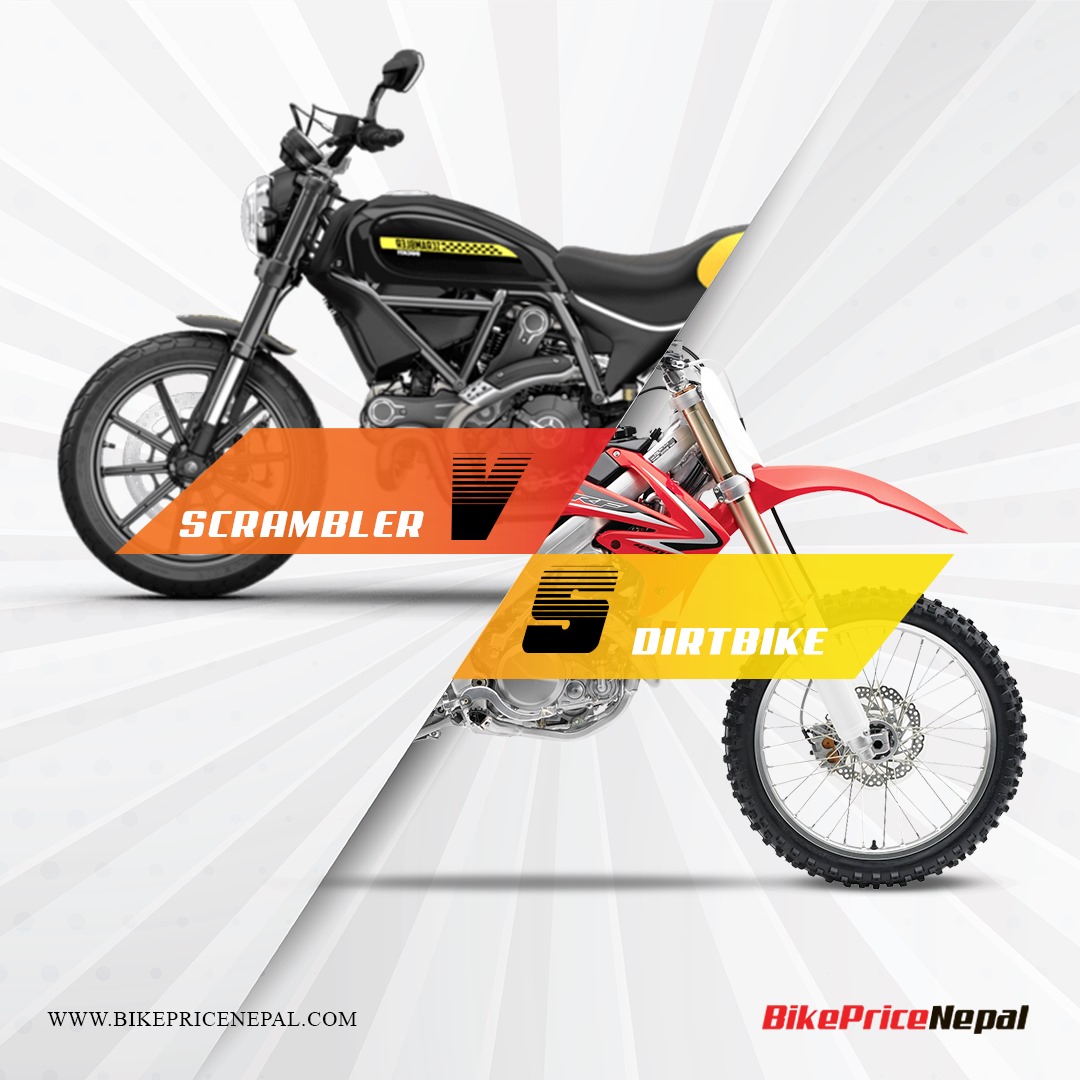Differences Between Scrambler and Dirt bike Motorcycles

Motorcycles come in various shapes and sizes, each tailored to specific riding preferences and terrains. Among these, scramblers and dirt bikes stand out as two distinct breeds with unique characteristics. While both share some commonalities, they cater to different riding experiences. In this article, we'll delve into the key differences between scramblers and dirt bikes, considering design, tires, suspension, riding position, and engine characteristics.
Design and Purpose:
Scrambler motorcycles trace their roots back to the 1950s and 1960s when they were conceived as versatile machines capable of handling both on-road and off-road adventures. The design of scramblers exudes a classic, retro-inspired aesthetic, featuring high-mounted exhaust pipes, simple frames, and a more upright riding position. On the other hand, dirt bikes are purpose-built for off-road use, boasting lightweight frames, high ground clearance, and specialized suspension systems to tackle rough terrains like dirt trails and motocross tracks.
Tires:
The tires on a motorcycle play a crucial role in determining its capabilities on different surfaces. Scramblers typically come equipped with dual-purpose tires, offering a balance between on-road and off-road performance. These tires are designed to provide reasonable traction on both paved roads and dirt trails. In contrast, dirt bikes sport knobby tires with deep treads, optimizing traction on loose and uneven surfaces encountered in off-road environments.
Suspension:
While scramblers possess some off-road capabilities, their suspension systems are not as specialized for extreme conditions as those found on dirt bikes. Dirt bikes feature robust and adjustable suspension systems designed to absorb shocks and handle jumps, ensuring a smooth and controlled ride over rough terrain commonly encountered in off-road riding.
Riding Position:
The riding position of a motorcycle significantly influences the overall riding experience. Scramblers typically offer a more relaxed and upright riding position, falling between the aggressive stance of sport bikes and the laid-back style of cruisers. While not as aggressively positioned as true off-road motocross bikes, scramblers provide a comfortable compromise for both on-road and light off-road adventures. In contrast, dirt bikes feature a more forward-leaning and aggressive riding position, enabling riders to shift their weight easily for better control during jumps and maneuvering over obstacles.
Engine Characteristics:
The engine characteristics of a motorcycle contribute to its overall performance and suitability for different riding conditions. Scramblers often come equipped with road-friendly engines that strike a balance between power and fuel efficiency. These engines are suitable for city commuting and occasional off-road excursions. On the other hand, dirt bikes boast engines tuned specifically for off-road performance, emphasizing high torque at lower RPMs and quick throttle response to navigate challenging terrains effectively.
In summary, while scramblers and dirt bikes may share a capacity for off-road excursions, their design, tires, suspension, riding position, and engine characteristics highlight their distinct purposes and capabilities. Scramblers are versatile machines designed for both on-road and off-road use, featuring a retro aesthetic and providing a comfortable riding experience. In contrast, dirt bikes are purpose-built for off-road adventures, with specialized features that excel in navigating challenging and uneven terrains. Understanding these differences allows riders to choose a motorcycle that aligns with their preferences and intended riding experiences.
